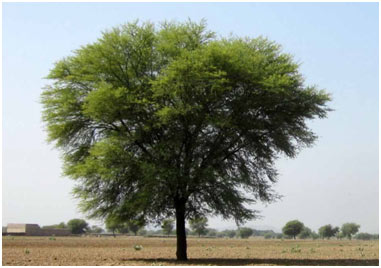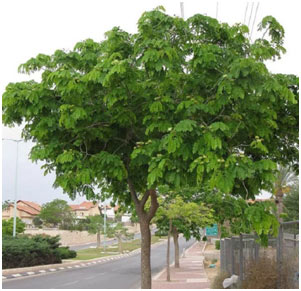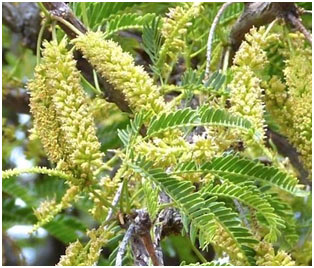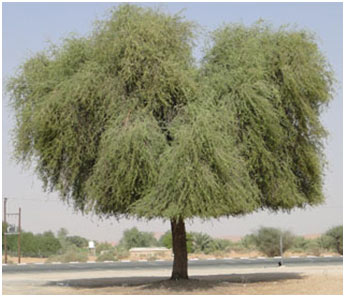Some Famous Plants of Mimosa or Acacia Family
A family of about 56 genera and about 2800 species. Mostly trees or shrubs, seldom climbers or herbs. Most of them are xerophytes. Many trees of this family including species of Acacia, Albizzia, and Xylia offer commercially crucial wood, which is used for building and construction function or for furniture or as a fuel. Here in this article, we have provided you some familiar, important, and beneficial plants of family Mimosa.
1.Gum Arabic tree
Scientific name: Vachellia nilotica
Vachellia nilotica commonly known as gum arabic tree, babul, thorn mimosa, Egyptian acacia, or thorny acacia is a flowering plant tree. It is endemic to Africa, the Middle East, and the Indian subcontinent. It is a tree with a thick spheric crown, stems, and branches usually dark to black colored, fissured bark, grey-pinkish slash, exhibiting a reddish low-quality gum. In the part of its various small stock take in the pods and leaves, however elsewhere it is likewise very popular with cattle.

Pods are used as a supplement to poultry rations in Pakistan and India. Dried pods are particularly looked for by animals on rangelands. The exudate gum of this tree is referred to as gum arabic and has actually been gathered from the pharaonic times for the manufacture of medications, dyes, and paints.
2.Albizia lebbeck
Scientific name: Albizia lebbeck
Albizia lebbeck is a species of Albizia, indigenous to Indomalaya, New Guinea, and Northern Australia and widely cultivated and naturalized in other tropical and subtropical regions. In the West Indies and specific parts of South America, this tree is known as a ‘Shak Shak Tree’ because of the noise the seeds make in the pod.

Its uses consist of environmental management, forage, medicine, and wood. It is cultivated as a shade tree in North and South America. In India and Pakistan, the tree is used to produce timber. Lebbeck is an astringent, also used by some cultures to deal with boils, cough, to treat the eye, flu, gingivitis, lung issues, pectoral problems, is utilized as a tonic, and is used to deal with abdominal tumors.
3.Touch Me Not
Scientific name: Mimosa pudica
It is a creeping annual or perennial flowering plant. It is typically grown for its interest worth: the compound leaves fold inward and sag when touched or shaken, protecting themselves from damage, and re-open a couple of minutes later. Due to Mimosa’s unique response to touch, it became an ideal plant for lots of experiments concerning plant habituation and memory.

The species is native to South and Central America, however is now a pantropical weed, and can now be discovered in the Southern United States, South Asia, East Asia, and South Africa as well. The leaflets likewise close when promoted in other methods, such as touching, warming, blowing, shaking, which are all encapsulated within mechanical or electrical stimulation.
4.Honey mesquite
Scientific name: Prosopis glandulosa
The plant is primarily endemic to the Southwestern United States and Northern Mexico. Its range extends on the northeast through Texas and into southern Kansas, and west to southern California. It has actually rounded big and floppy, drooping branches with feathery foliage and directly, paired spinal columns on twigs.

It is considered to have a medium growth rate. It flowers from March to November, with pale, yellow, lengthened spikes and bears directly, yellow seedpods. The seeds are consumed by a range of animals, such as scaled quail. Other animals, consisting of deer, collared peccaries, coyotes, and jackrabbits, feed on both pods and plant life.
5.Jand
Scientific name: Prosopis cineraria
Also called ‘Ghaf, is a species of a flowering tree. It is native to arid parts of Western Asia and the Indian Subcontinent, consisting of Afghanistan, Bahrain, Iran, Oman, Pakistan, Saudi Arabia, the United Arab Emirates, India, and Yemen. Its leaves are shattered and stripy along its branch. It can be found in desert places where it can make it through. It is a recognized introduced species in parts of Southeast Asia, including Indonesia.

